STARLOG
SOUTHERN COMFORTS
FEBRUARY 21, 2017
| Observer: |
Tom Campbell |
| Location: |
College Station, Texas (Long: 96°17'W Lat: 30°37'N) |
| Telescope: |
Zhumell 12" f/5 Dobsonian |
| Eyepieces: |
Zhumell 30mm (50x)
Explore Scientific 18mm (83x)
Explore Scientific 11mm (136x) |
| Lenses: |
Celestron Luminos Barlow (2.5x) |
| Weather: |
The sky was mostly clear. Temperature was in the mid 60s (F), with a slight breeze, turning cooler as evening progressed. |
OBSERVING SUMMARY:
CANCER: NGC 2775
COLUMBA: NGC 1851
ERIDANUS: Σ649
LEPUS: R Lep, NGC 1888, NGC 1889
PUPPIS: π Pup, CR 135, NGC 2451A/B, NGC 2477, NGC 2546
Yesterday, we received about three inches of rain, but by evening, the skies were starting to clear a bit. By contrast, tonight was almost completely clear and I didn't want to waste the opportunity to observe. Even though the ground was still a bit damp, I set up in the back yard to get better and darker skies than my driveway offered.
I've been neglecting a lot of the more southern objects because of the combination of light pollution in my sky and how low the objects were. Tonight, I wanted to try to rectify that. There are a lot of good objects there that I have yet to log.
I found a good spot to set up in the back yard that offered a sky almost down to the southern horizon for a small space between two of my neighbor's houses. If I timed things just right, I might be able to pick out a few things there. I felt a bit like Lord Rosse with his Leviathan telescope mounted between two stone walls, just waiting until the sky moved overhead enough that he could catch his intended prey.
| NGC 1851 |
Columba |
Globular Cluster |
7:51pm CST |
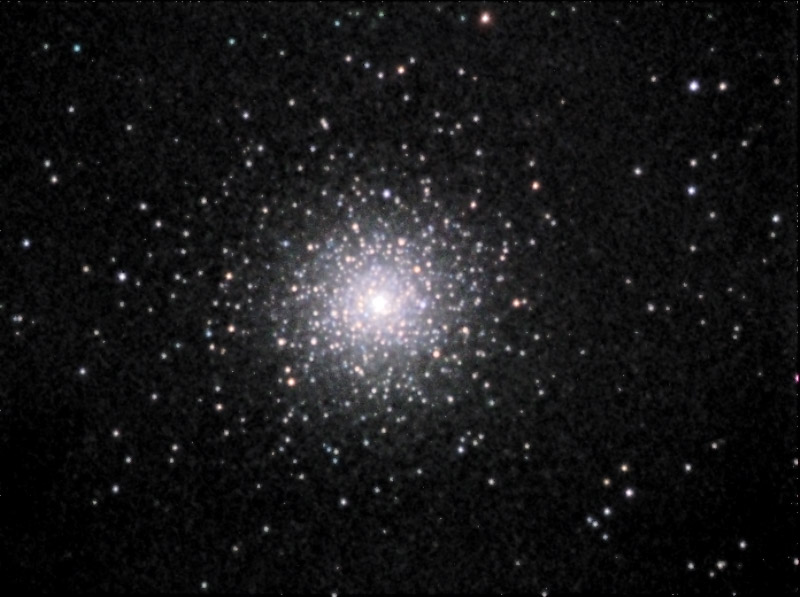 |
This is the first object I've logged in the constellation of Columba, the Dove. This cluster is bright, but due to its low altitude, it is difficult to resolve it as much as I'd like. The best view was with my barlowed 11mm (340X), where I could detect several stars along the outer edges and the interior was a big, bright, white ball. Even down in the atmospheric muck, it is still impressive. |
| |
| CR 135 |
Puppis |
Open Cluster |
8:08pm CST |
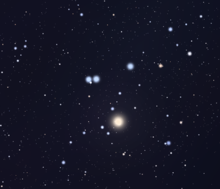 |
π Pup is the crown jewel in this cluster, shining in glorious yellow. Its blue companion is nearby, providing great contrast. The rest of the cluster is very loose, barely fitting into the field of view with my 82° 18mm eyepiece (83X). It contains about a dozen stars of varying magnitudes. The brightest four stars form a triangle, with 3 stars making the base and π Pup forming the apex. |
| |
| NGC 2451A/B |
Puppis |
Open Cluster |
8:15pm CST |
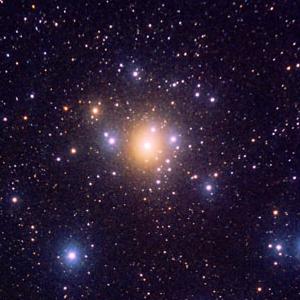 |
This was an easy cluster to find, and I got lucky that it was right between the roofs of two of my back yard neighbors. It has a bright star that's yellow and the other members are white or blue-white. There are several different magnitudes of stars represented, from very bright to somewhat faint. Perhaps 30 members altogether. Somewhat round in shape, but flat on one side.
After researching this cluster a bit, I found out it is actually two open clusters superimposed on each other. This explains the widely varying magnitudes. As an aside, this is the 150th (and 151st) open cluster I've logged. |
| |
At this point, my wife came outside to remind me that we still needed to get mail. Our community mailbox is a block away and we usually take the opportunity to just walk around the block while we're at it. I pointed out Canopus to my wife while we were walking and told her this was a star I had never been able to see until we moved to Texas. A few minutes later, we found ourselves back home and I went to the back yard to continue where I left off.
| NGC 2477 |
Puppis |
Open Cluster |
8:39pm CST |
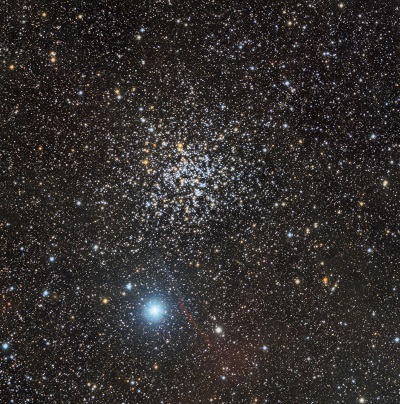 |
This cluster is close to NGC 2451. It is very faint, but also very rich. Several dozen members are visible. I couldn't detect any color in the stars. The best view was with my 11mm eyepiece (136X), where it takes up over half the field. Beautiful! Near the center of the cluster is a star that might be yellow-orange, but it's hard to tell for sure because of how faint it is, even though it's one of the brighter stars in the cluster. |
| |
| NGC 2546 |
Puppis |
Open Cluster |
8:48pm CST |
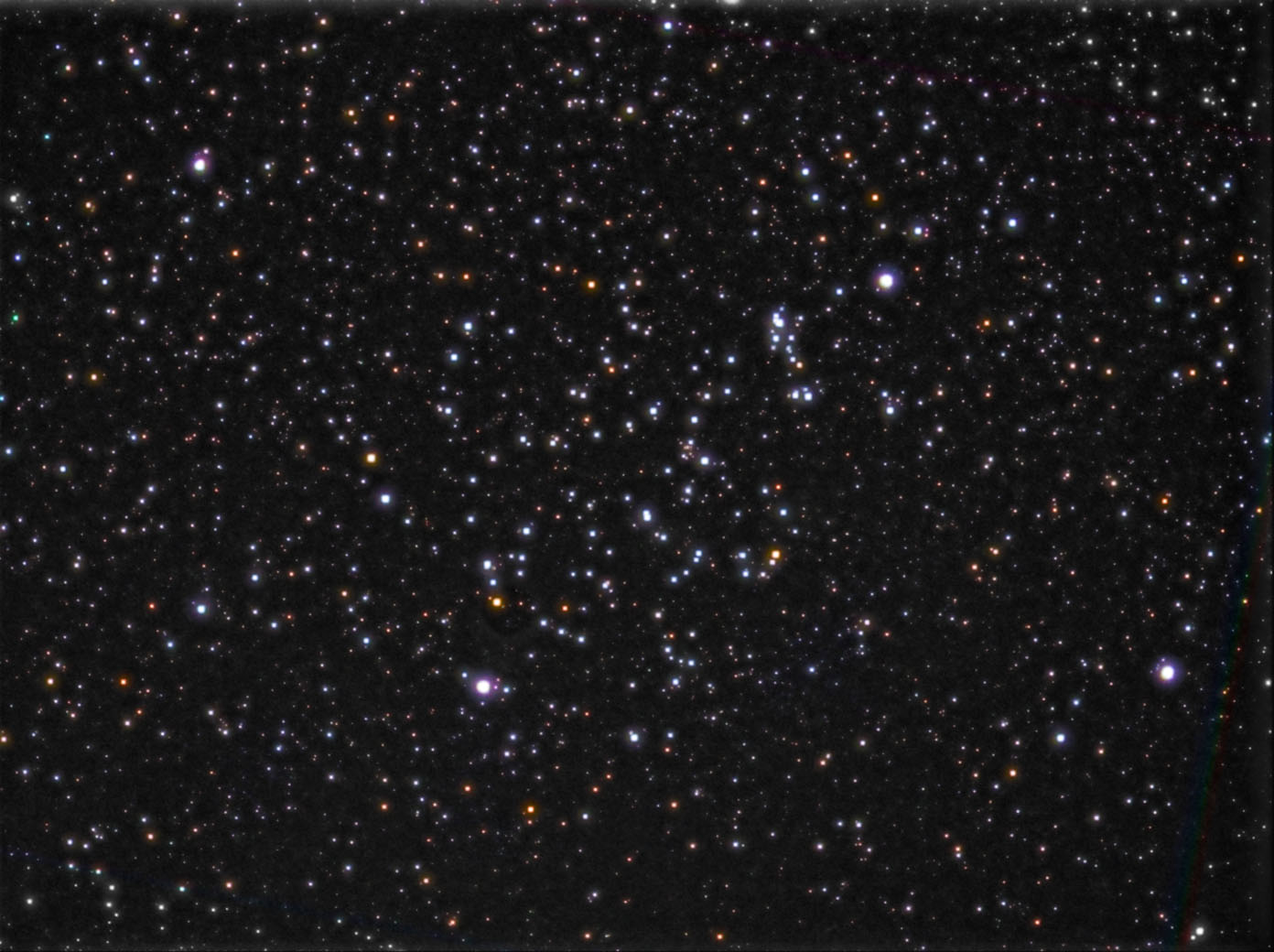 |
This is a somewhat dim and very loose cluster. It has 3-4 dozen members. Most are magnitude 9 or so. With the 30mm eyepiece (50X), it still fills the field of view. It is about twice as long as it is wide. About halfway towards one end, there is a fish-shaped knot of stars. Three stars form the mouth and eye, a couple of stars make up the tail fin, and a few other stars fill in the body and other fins. It is noticeable mainly because the other stars in the cluster are so spread out. |
| |
| NGC 1888/9 |
Lepus |
Galaxies |
8:57pm CST |
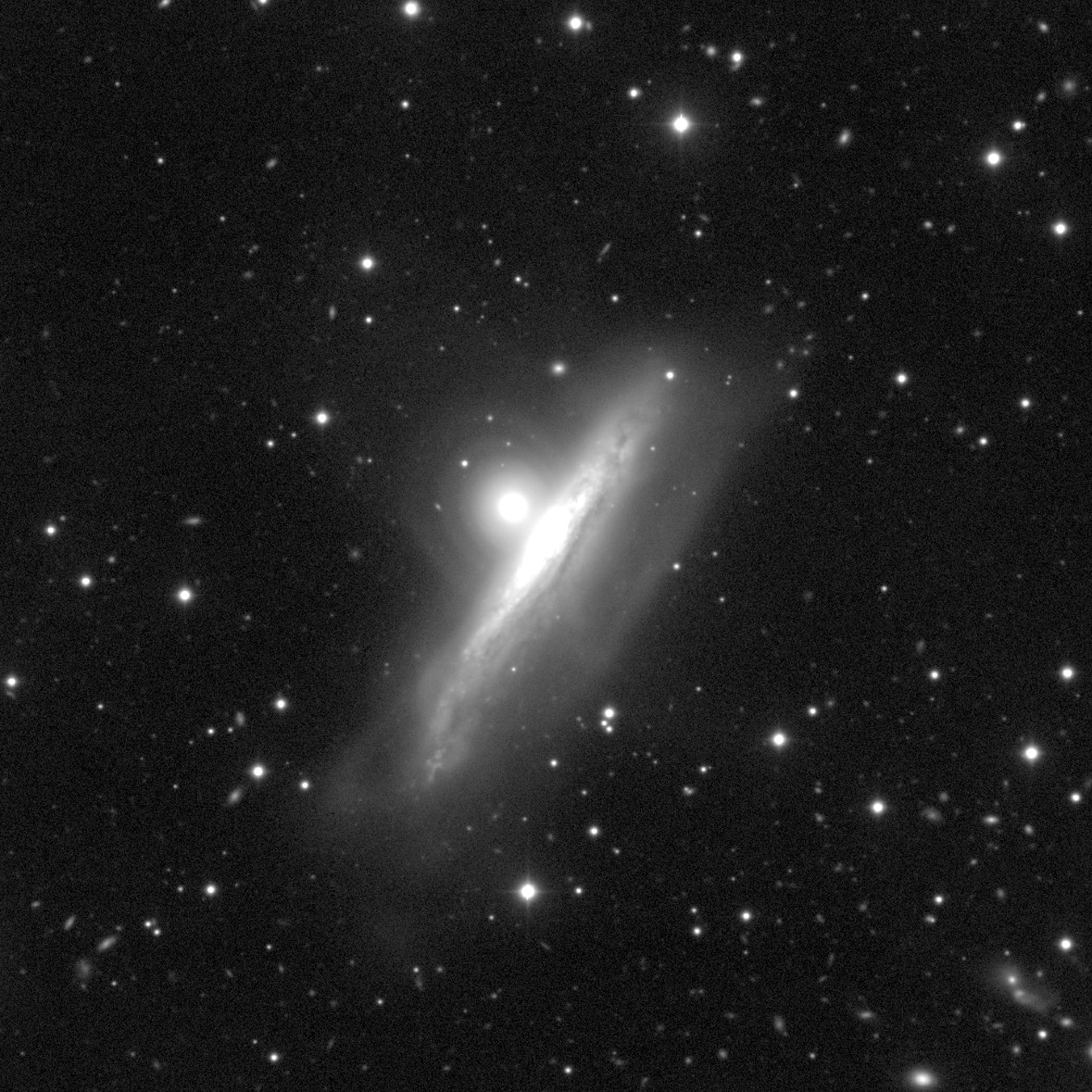 |
I thought I'd spotted these galaxies the other night, but clouds moved in before I could confirm my observation. The location for this galactic pair is pretty easy to find due to a couple of rows of stars almost parallel to each other. The galaxies are just off the tip of the dimmer of these lines of stars. They appeared best at 136X. With averted vision, the nearly stellar NGC 1889 is easy to spot, but the dim smudge of NGC 1888 almost disappears. With direct vision, it is the opposite. |
| |
| R Lep (Hind's Crimson Star) |
Lepus |
Carbon Star |
9:06pm CST |
This star is a beautiful, deep orange pumpkin color. Gorgeous! |
| |
| Σ649 |
Eridanus |
Double Star |
9:14pm CST |
This double is right next to λ Eri and the primary is the middle star in a line of 3 stars, including λ Eri and HIP 23834. The primary appears white and the dimmer component is perhaps blue. |
| |
| NGC 2775 |
Cancer |
Galaxy |
9:35pm CST |
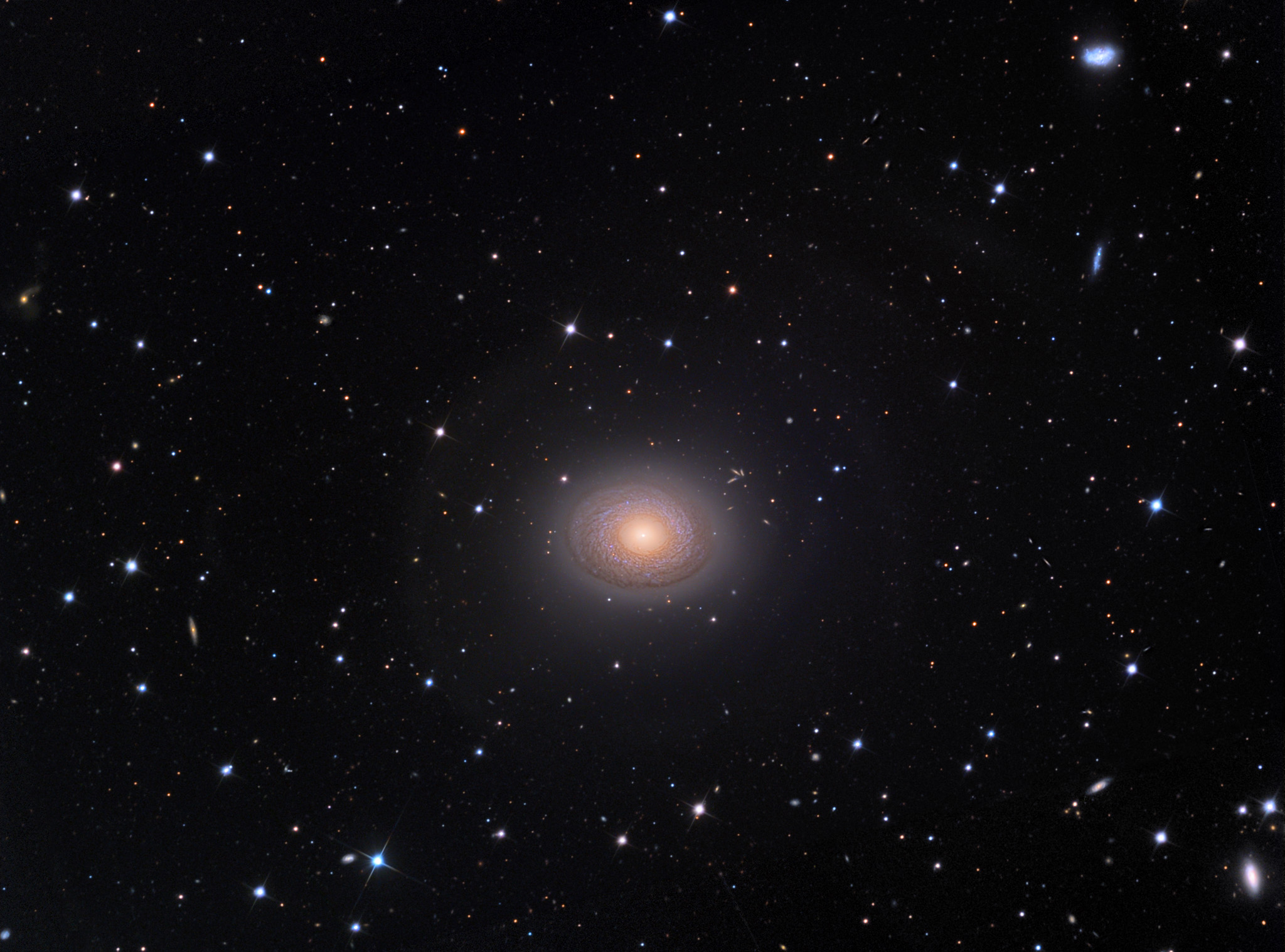 |
This galaxy is somewhat bright and is easily found off the head of Hydra. Using a barlowed 18mm (208X), it appears as a diffuse glow. With averted vision, the core is somewhat bright, and the rest of the galaxy is much fainter and somewhat oval shaped, but it was difficult to determine what direction it was facing. |
| |
I was hating to call it quits - the night was beautiful. But as the temperatures dropped, dew was becoming more and more of a problem. My telescope was dripping and it was difficult to keep my eyepieces cleaned off. With one last wistful look at the sky, I decided to pack up for the night.






